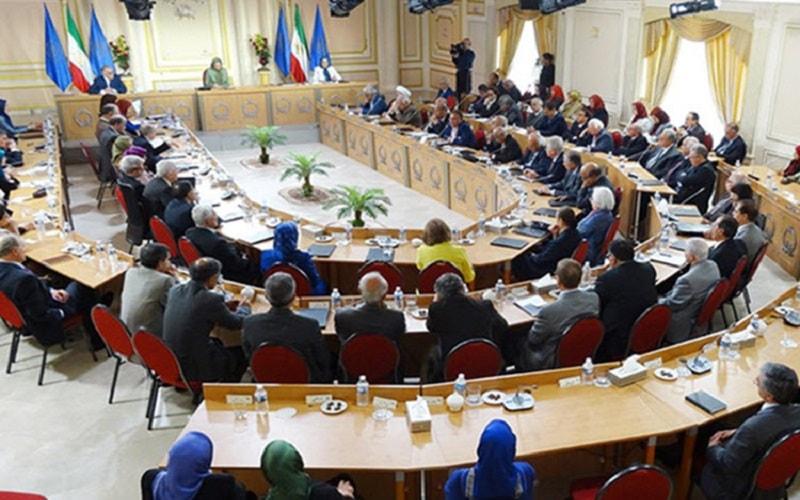Getting to know the Iranian regime’s main opposition
On June 20, 1981, the security forces of the Iranian regime opened fire on a peaceful, 500,000–strong demonstration in Tehran, putting a violent end in a tenuous era of peaceful political activism that had started in February 1979 after popular protests toppled the Shah regime and saw the rise of Ruhollah Khomeini and the mullahs to power. On the morrow of June 20, the regime’s forces would arrest, torture and execute anyone affiliated with opposition groups, especially the People’s Mojahedin Organization of Iran (PMOI/MEK).
On July 21, while Khomeini’s regime was fast busy arresting and executing Iranian opposition members by the droves, Massoud Rajavi, the leader of PMOI/MEK, founded the National Council of Resistance of Iran (NCRI), a coalition of all forces that sought freedom and democracy in Iran.
Months later, the headquarters of the NCRI were moved to France to create a political umbrella for the struggle for freedom inside Iran.
At present, 37 years later, the NCRI is the largest and longest standing coalition of Iranian opposition groups against the regime of Tehran and has managed to stand despite countless conspiracies by the Iranian regime and its foreign allies and proponents. Regardless of their station, the members of the NCRI take active part in protests, demonstrations and activities that aim to expose the Iranian regime’s brutality and promote democracy and freedom in Iran.
The members of the NCRI each have an equal voice and vote in the decisions of the Council, regardless of their political and organizational affiliations. The NCRI’s charter states it seeks to topple the Khomeini regime and to establish a transitional government which will represent all faiths, ethnicities and political tendencies. The transitional government’s main goal is to prepare the grounds for a democratic state and will last a maximum of six months, until the country becomes ready for free and fair elections.
During the six-month transitional period, Iran’s new constitutional parliament will take shape and will oversee the elections.
The NCRI is an inclusive coalition, where all walks of life have a voice. More than half of the members of the NCRI are women, a stark contrast to the mullah-ruled Iran, where women are oppressed and under-represented.
The political platform of the NCRI is summarized by the 10-point plan of its president-elect, Mrs. Maryam Rajavi, which has garnered support among political figures, religious leaders and rights activists worldwide, because it addresses all the problems that the world and the Iranian people face in respect with the Iranian regime. Following are key highlights of Mrs. Rajavi’s platform:
- Free and fair elections and popular vote is the only legitimate path to political power.
- Respect for freedom of expression, media, political affiliation, and assembly, along with unconditional and uncensored access to internet and other sources of information.
- The abolishment of the death penalty.
- Separation of church and state: Freedom of religion and the banning of any form of discrimination based on religion.
- Gender equality: Banning of discrimination against women and the abolishment of laws that undermine women’s rights in marriage, divorce, clothing, education and employment.
- Modern legal and judiciary structures: The abolishment of the mullahs’ Sharia law and the incorporation of the presumption of innocence, the right to defense and the right to be tried in a public court.
- Commitment to human rights based on the Universal Declaration of Humans Rights, and its international covenants and conventions.
- Commitment to a market economy, with equal opportunity for all Iranians.
- Peaceful coexistence with other countries and an end to the meddling and destabilizing activities of the mullahs’ regime.
- Commitment to a non-nuclear Iran. Banning of the development of weapons of mass destruction.
